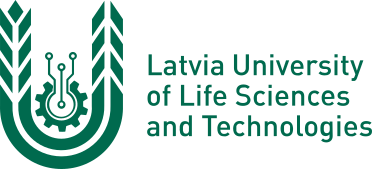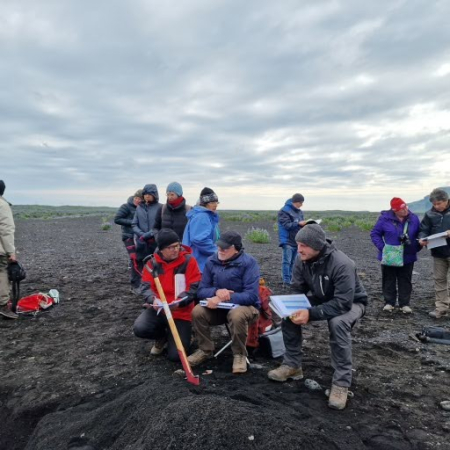LBTU researchers gain experience on the effectiveness of the stone relocation method in Iceland
Researchers of the Faculty of Agriculture of the Latvian University of Life Sciences and Technologies - LBTU in cooperation with Z/S "Kalna Viesītes", are implementing the research project "Approbation of the stone relocation method for improving the physical and mechanical properties of hard-to-work, stony soils". This is done with the aim of testing the stone method and its effectiveness, which is the traditional picking of stones from the field.
In order to address the challenges of soil treatment and gain international experience, as one of the project's activities, the World Reference Base for Soil Resources (WRB) field workshop in Iceland took place from June 5 to 13. During that time, Ieva Erdberga, a scientist at the Faculty of Agriculture, with a research group had the opportunity to view 22 unique soil outcrops, which gave the opportunity to clarify the nuances of the WRB soil classification added in 2022 in field conditions. There was also a discussion on the importance of improving soil classification in the context of the challenges caused by climate change, and reports on the results of the conducted research were presented.
"Iceland is a unique point of the planet from the point of view of soil forest formation, where both volcanic and glacial activities, as well as very active water and wind erosion, can be found at the same time. Due to its unique history, it is a living example of erroneous agrotechnical decisions and excellent land restoration solutions," he says. researcher I. Erdberga.
The researcher adds that most of the upland forests of Latvia were formed as a result of the glacier activity, which happened about 10,000 - 12,000 years ago. "We can evaluate the conditions for the formation of soil forests in a complex with the soil processes that took place in them, which do not always allow us to clearly define what we see. In the case of Iceland, where the active activity of glaciers continues without disturbing the ground cover, the formation of glaciofluvial and glacial sediments is clearly visible. Simultaneously with the activity of the glacier, there is active accumulation of eolian sediments and the early stages of bog formation can also be observed. Especially rocky soils and very active cryogenic processes allow us to clearly see regularities," said I. Erdberga.
Detailed information about the research progress and results will be provided during the annual International Soil Day Symposium organized by the LBTU Institute of Soil and Plant Sciences, which will take place on November 5.
Contact information about the research: researcher Ieva Erdberga (e-mail: ieva.erdberga@lbtu.lv).
The project "Approbation of the stone relocation method for improving the physical and mechanical properties of hard-to-work, stony soils" (No. 19-00-A01620-000077) is implemented with the support of the European Agricultural Fund for Rural Development of the European Union in sub-measure 16.2 "Support for the development of new products, methods, processes and technologies ". The partners of the project are LBTU and Z/S "Kalna Viesites". The implementation of the project is planned until May 31, 2023. The project is supported by the Ministry of Agriculture and the Rural Support Service.

